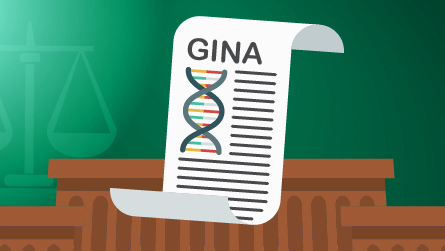Step 1: The bill is drafted
Any member of Congress – either from the Senate or the House or Representatives – who has an idea for a law can draft a bill. These ideas come from the Congress members themselves or from everyday citizens and advocacy groups. The primary Congress member supporting the bill is called the "sponsor". The other members who support the bill are called "co-sponsors".
Step 2: The bill is introduced
Once the bill is drafted, it must be introduced. If a Representative is the sponsor, the bill is introduced in the House. If a Senator is the sponsor, the bill is introduced in the Senate. Once a bill is introduced, it can be found on Congress.gov, which is the official government website that tracks federal legislation.
Step 3: The bill goes to committee
As soon as a bill is introduced, it is referred to a committee. Both the House and Senate have various committees composed of groups of Congress members who are particularly interested in different topics such as health or international affairs. When a bill is in the hands of the committee, it is carefully examined and its chances of passage by the entire Congress are determined. The committee may even choose to hold hearings to better understand the implications of the bill. Hearings allow the views of the executive branch, experts, other public officials and supporters, and opponents of the legislation to be put on the record. If the committee does not act on a bill, the bill is considered to be "dead".
Step 4: Subcommittee review of the bill
Subcommittees are organized under committees and have further specialization on a certain topic. Often, committees refer bills to a subcommittee for study and their own hearings. The subcommittee may make changes to the bill and must vote to refer a bill back to the full committee.
Step 5: Committee mark up of the bill
When the hearings and subcommittee review are completed, the committee will meet to "mark up" the bill. They make changes and amendments prior to recommending the bill to the "floor". If a committee votes not to report legislation to the full chamber of Congress, the bill dies. If the committee votes in favor of the bill, it is reported to the floor. This procedure is called "ordering a bill reported".
Step 6: Voting by the full chamber on the bill
Once the bill reaches the floor, there is additional debate and members of the full chamber vote to approve any amendments. The bill is then passed or defeated by the members voting.
Step 7: Referral of the bill to the other chamber
When the House or Senate passes a bill, it is referred to the other chamber, where it usually follows the same route through committees and finally to the floor. This chamber may approve the bill as received, reject it, ignore it or change it. Congress may form a conference committee to resolve or reconcile the differences between the House and Senate versions of a bill. If the conference committee is unable to reach an agreement, the bill dies. If an agreement is reached, the committee members prepare a conference report with recommendations for the final bill. Both the House and Senate must vote to approve the conference report.
Step 8: The bill goes to the president
After both the House and Senate have approved a bill in identical form, the bill is sent to the President. If the President approves of the legislation, it is signed and becomes law. If the President takes no action for ten days while Congress is in session, the bill automatically becomes law. If the President opposes the bill, they may veto the bill. In addition, if no action is taken for 10 days and Congress has already adjourned, there is a "pocket veto" .
Step 9: Overriding a veto
If the President vetoes a bill, Congress may attempt to override the veto. If both the Senate and the House pass the bill by a two-thirds majority, the President's veto is overruled, and the bill becomes a law.
Many terms above are adapted from Congress.gov. See the full list of legislative terms.





